Understanding the Navigation Rules (COLREGS)
The Rules of the Road for Safer Boating
Boating is about freedom — the open water, the wind, and the horizon. But freedom on the water also depends on order. Every year, collisions occur not because of bad weather or broken engines, but because boaters fail to follow the basic “Rules of the Road.”
These internationally recognized rules, known as the COLREGS (short for Convention on the International Regulations for Preventing Collisions at Sea), form the foundation of maritime safety. Whether you’re captaining a small fishing boat, a sail yacht, or a personal watercraft, understanding and applying the COLREGS is essential for keeping everyone safe and maintaining harmony on shared waterways.
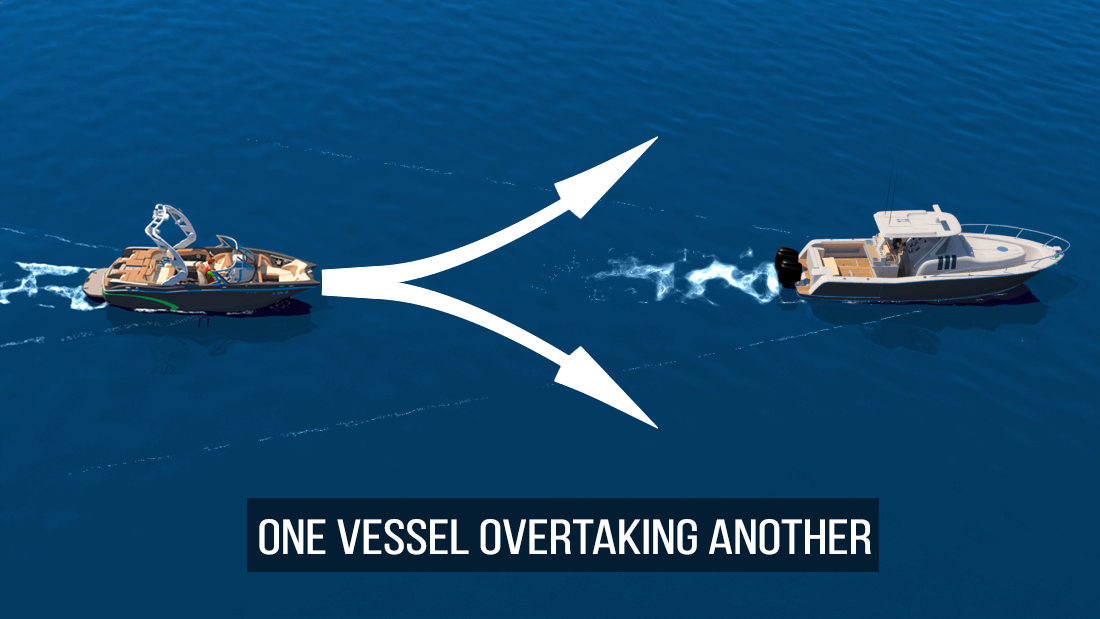
1. What Are the COLREGS?
The International Regulations for Preventing Collisions at Sea (COLREGS) were first established in 1972 by the International Maritime Organization (IMO) and have since been adopted by nearly every maritime nation. In North America, they are enforced through national versions:
-
In Canada: under the Collision Regulations of the Canada Shipping Act
-
In the United States: through the Navigation Rules, International–Inland
These regulations provide a universal language for how vessels should behave when meeting, crossing, or overtaking one another — no matter where in the world they are.
At their core, the COLREGS are about predictability. When everyone follows the same patterns, you can anticipate what another vessel will do and take early, clear action to avoid danger.
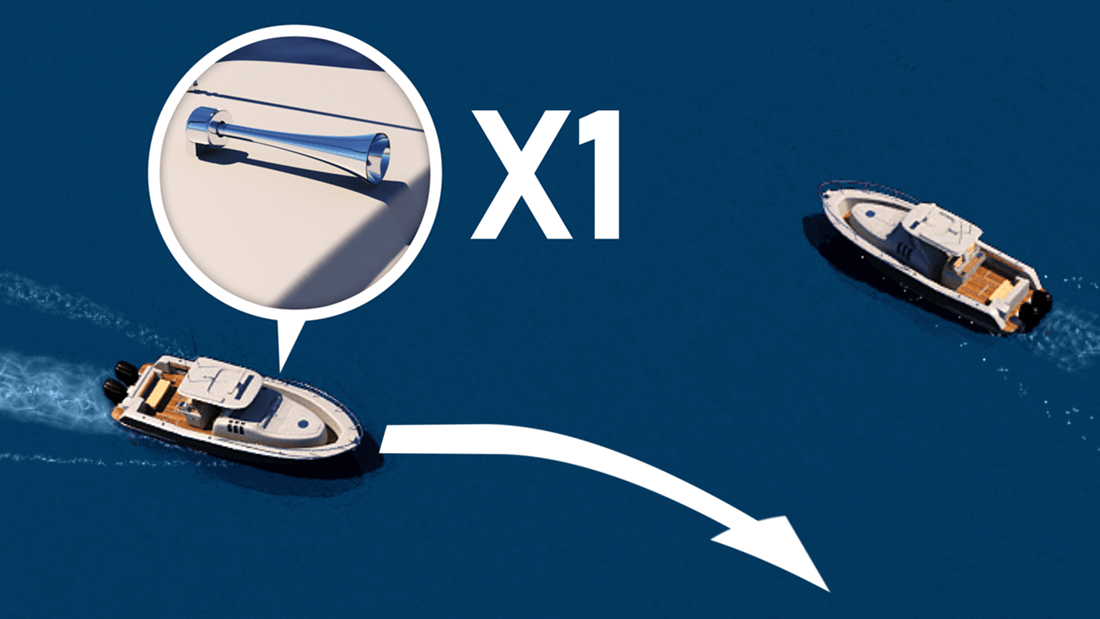
2. The “Rules of the Road” on Water
Think of the COLREGS as the maritime version of highway traffic laws. On the road, everyone knows which side to drive on, who yields, and when to stop. On the water, we use navigation rules to achieve the same clarity.
These rules specify:
-
Right-of-way (stand-on) and give-way responsibilities
-
Safe speeds and proper lookout
-
Lighting, sound signals, and day shapes
-
Conduct in restricted visibility
Let’s look at the main principles every recreational boater should know.
3. Rule 5 — Always Maintain a Proper Lookout
Every vessel must maintain a proper lookout by sight and hearing at all times. That means continuously scanning the horizon for other boats, buoys, swimmers, and hazards — even when using radar or GPS.
Distractions are a leading cause of boating accidents. Assign one person to watch forward and another to check astern if possible. Listen for engine sounds, horns, or breaking waves that might indicate another craft approaching. Technology helps, but human attention is irreplaceable.

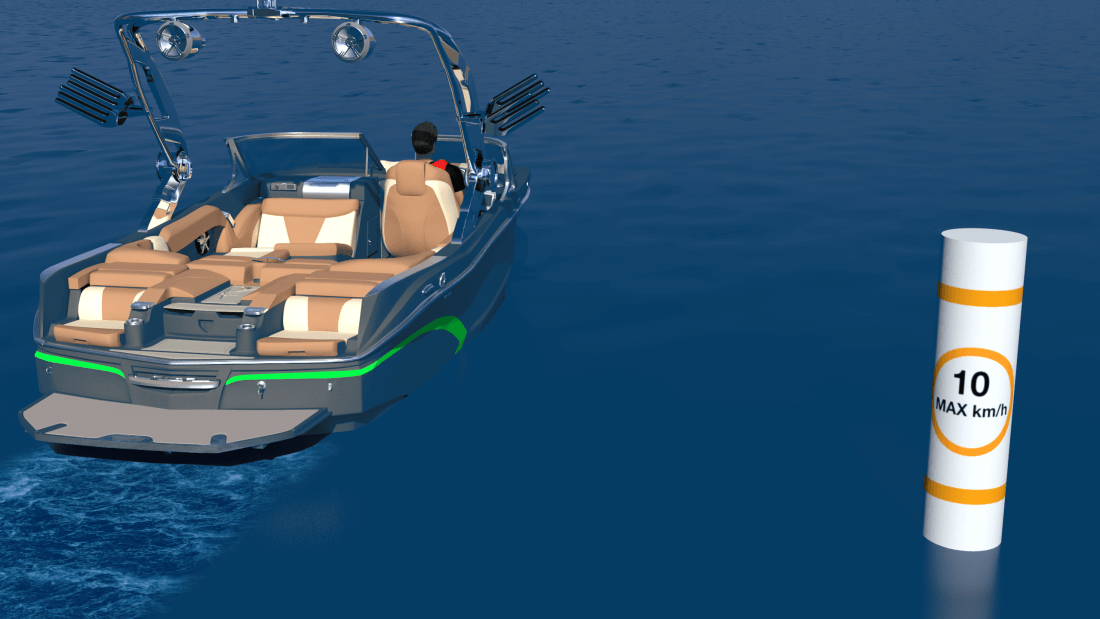
4. Rule 6 — Safe Speed
A safe speed allows you to take effective action to avoid collision and to stop within a distance appropriate to the conditions.
Factors to consider include:
-
Visibility (day, night, fog, or glare)
-
Traffic density
-
Background lights near shore
-
The vessel’s maneuverability and stopping distance
-
Wind, current, and wave conditions
There’s no specific speed limit on open water — “safe speed” depends on conditions. However, most marinas and canals have posted limits (usually 5–10 knots). If you create a wake that endangers others or causes property damage, you are likely going too fast.
5. Rule 7 — Assessing the Risk of Collision
Never assume another vessel sees you or will alter course. The rule says you must use all available means — sight, hearing, radar, AIS, and judgment — to determine if a collision risk exists.
A simple visual method:
Pick a stationary reference on your boat (like a rail) and line it up with the approaching vessel. If that vessel stays in the same relative position while getting larger, you are on a collision course.
When in doubt, take early and bold action to avoid danger — small, hesitant course changes are confusing.
6. Rule 8 — Action to Avoid Collision
If a risk of collision exists, act in ample time and make your maneuver large enough to be obvious to the other vessel. Small course changes are harder to detect.
-
Change direction or speed decisively.
-
Avoid passing too close.
-
Once clear, return to your original course only when it’s safe.
Sudden zigzags or panic reversals can make things worse. Calm, predictable action is key.
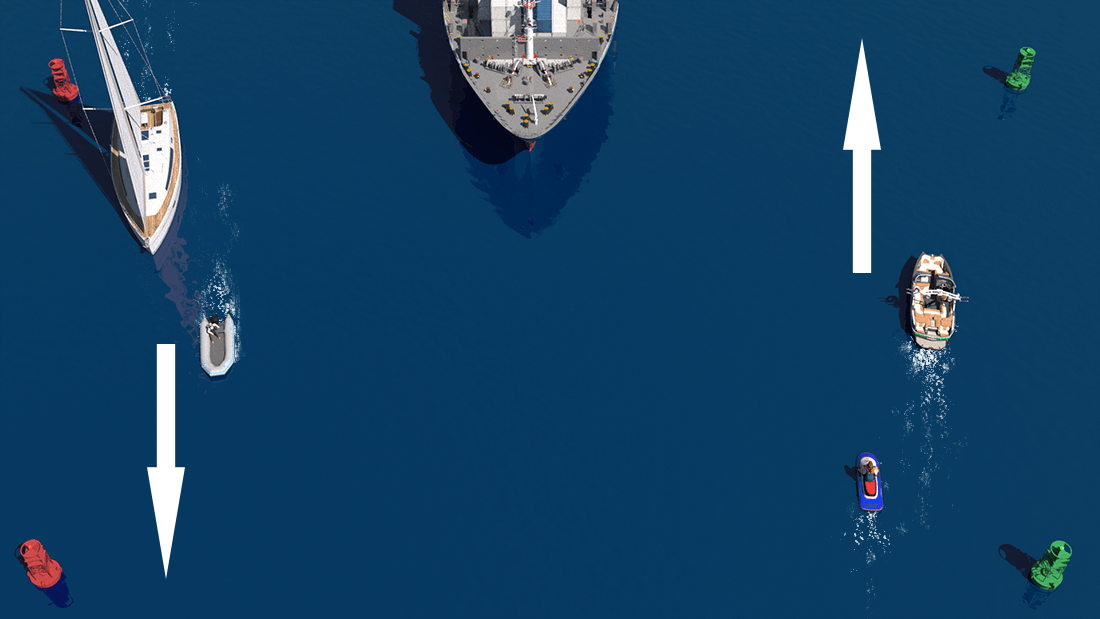
7. Rules 9–10 — Channels and Traffic Lanes
When navigating in a narrow channel, keep as far to the starboard (right) side as is safe. Small boats should not impede larger vessels constrained by draft (e.g., cargo ships).
In Traffic Separation Schemes (used in busy sea lanes), follow the designated lanes just like cars on a divided highway. Cross them at right angles if necessary, and avoid anchoring inside them.
For recreational boaters, this means staying clear of shipping channels whenever possible.
8. Rules 11–18 — The Core Steering and Sailing Rules
These are the heart of collision avoidance. They define what to do when meeting another vessel:
a. Meeting Head-On
When two power-driven vessels approach each other head-on or nearly so, each shall alter course to starboard (right) so that they pass port-to-port (left-to-left).
👉 Think: “Keep right” — just like driving a car.
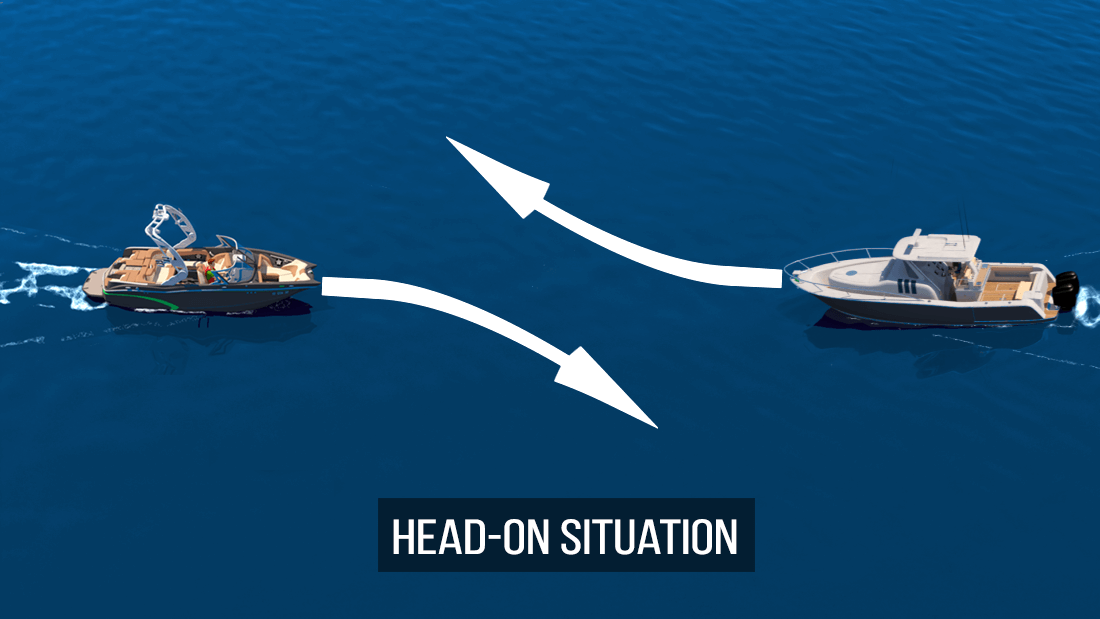
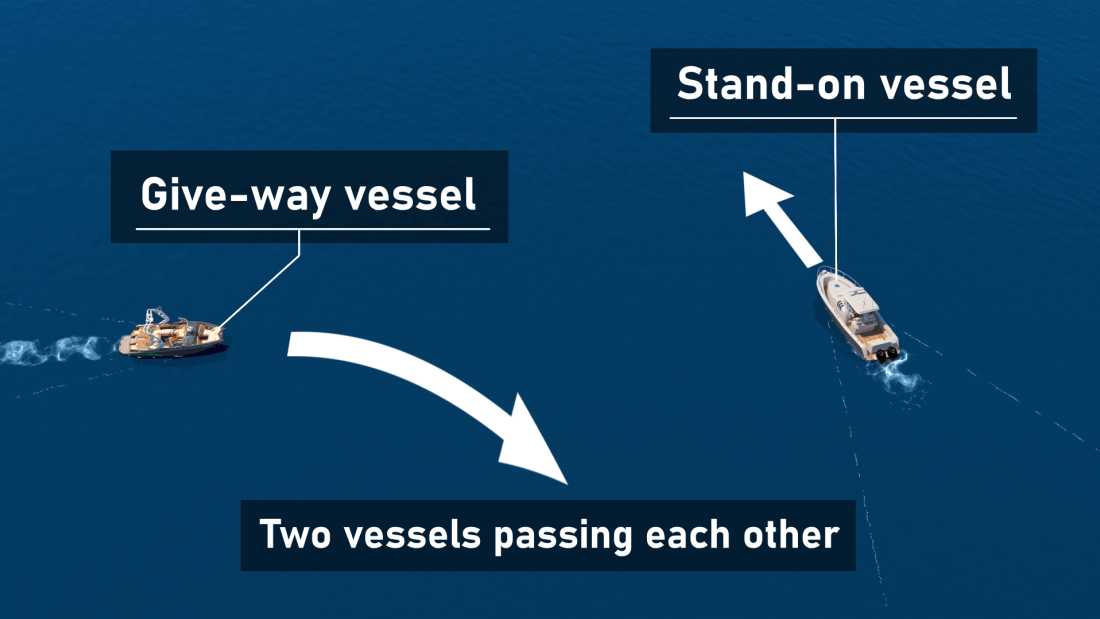
b. Crossing Situations
When two power-driven vessels are crossing, the vessel that has the other on its starboard (right) side must give way.
-
The give-way vessel should slow down or steer clearly behind the other.
-
The stand-on vessel should maintain course and speed but stay alert in case the other fails to act.
A simple memory trick: “If the other boat is on your right, they have the right of way.”
c. Overtaking
Any vessel overtaking another (approaching from more than 22.5° abaft the beam — roughly behind the side) is the give-way vessel, regardless of type. The overtaking boat must keep clear until fully past and safely ahead.
The vessel being overtaken should maintain course and speed but remain alert.

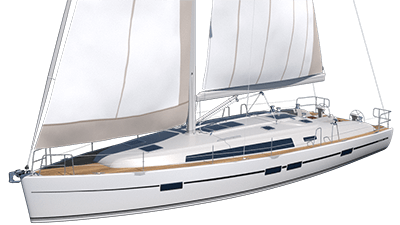
d. Power vs. Sail
A sailing vessel under sail alone has right of way over a power-driven vessel, because it has less ability to maneuver quickly. However, if the sailboat is using its engine, it counts as a power-driven vessel and must follow those rules.
e. Vessels Restricted in Ability to Maneuver
Certain vessels (such as those engaged in fishing, towing, dredging, or constrained by draft) have priority because they can’t easily alter course. Recreational boats should keep clear whenever possible.
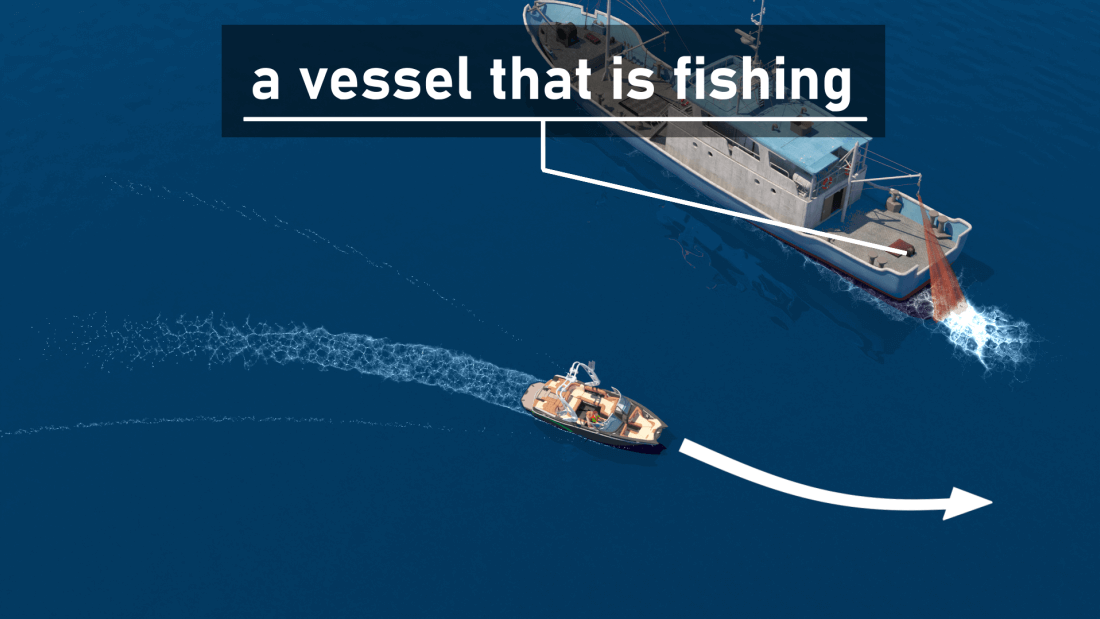
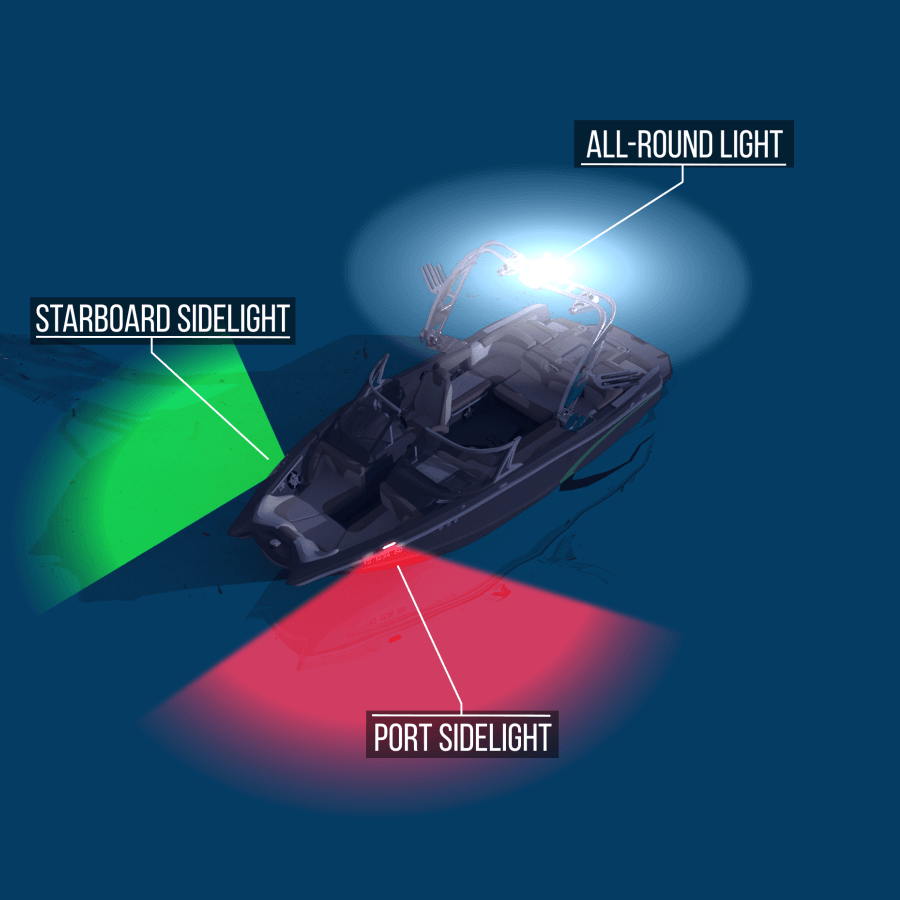
9. Rule 20–31 — Lights and Shapes
Navigation lights communicate a vessel’s type, size, and direction of travel — essential at night or in poor visibility.
| Vessel Type | Lights Displayed | Meaning |
|---|---|---|
| Power-driven underway | Red (port), green (starboard), and white stern & masthead light | Indicates direction of travel |
| Sailing vessel underway | Red, green, and white stern light (no masthead light) | Sailing only |
| Vessel at anchor | All-round white light visible 360° | Stationary at night |
| Vessel restricted in maneuver | Red over white or red over red vertical lights | “I am limited” or “Not under command” |
Learning these signals allows you to interpret what others are doing even before they come close.

10. Rule 34 — Sound and Light Signals
Sound signals are the “turn signals” of the waterway. In narrow channels or restricted visibility, they communicate intention:
| Signal | Meaning |
|---|---|
| One short blast | “I am altering course to starboard.” |
| Two short blasts | “I am altering course to port.” |
| Three short blasts | “I am operating astern propulsion.” |
| Five or more short blasts | “Danger — I do not understand your intentions.” |
Recreational vessels should also carry a whistle or horn capable of producing these blasts. In Canada and the U.S., this is a legal requirement for all boats over a certain size.
11. Rule 35 — Conduct in Restricted Visibility
In fog, heavy rain, or darkness, reduce speed, post extra lookouts, and use sound signals frequently. Use radar or GPS if available, but never rely on electronics alone. Your hearing and alertness become your best defense.
12. The Role of Common Sense
While COLREGS provide structure, good seamanship and common sense remain paramount. The rules explicitly state that nothing excuses a boater from taking action to avoid immediate danger, even if they technically have the right of way.
In other words, the right of way does not mean the right to collide.
Anticipate others’ mistakes. Communicate clearly. When uncertain, slow down, make eye contact if possible, and signal your intentions early.
13. Inland vs. International Rules
In North America, inland waters (rivers, lakes, and harbors) sometimes have slight variations from the international rules:
-
Sound signals may differ (for example, one short blast can mean “I intend to leave you on my port side” instead of “I’m turning right”).
-
Different markings may be used on buoys (“red right returning” system).
-
Some rules apply only within national boundaries.
Before boating in new areas, review local regulations published by Transport Canada, the U.S. Coast Guard, or local authorities.
14. Practical Tips for Learning and Applying COLREGS
-
Take a boating-safety or navigation course. Hands-on learning reinforces theory.
-
Practice reading lights and shapes using flashcards or online simulators.
-
Review case studies of real-world collisions to understand how small mistakes lead to accidents.
-
Teach your passengers the basics — even a child can learn port from starboard.
-
Use clear communication on board: agree on who’s watching, steering, and spotting hazards.
With repetition, these rules become instinctive — part of your natural seamanship.
15. Conclusion: Navigation Rules Are About Respect
The COLREGS are not just legal guidelines; they represent mutual respect among boaters. When you follow them, you show courtesy, professionalism, and awareness — the traits of a true skipper.
Understanding the navigation rules helps you predict others’ actions, reduces stress, and creates a safer environment for everyone — from paddleboarders to freighters.
Next time you head out, remember: navigation rules are not a burden; they are the invisible lines that make freedom on the water possible. Master them, and you’ll not only navigate confidently but also uphold the proud tradition of seamanship shared by boaters worldwide.